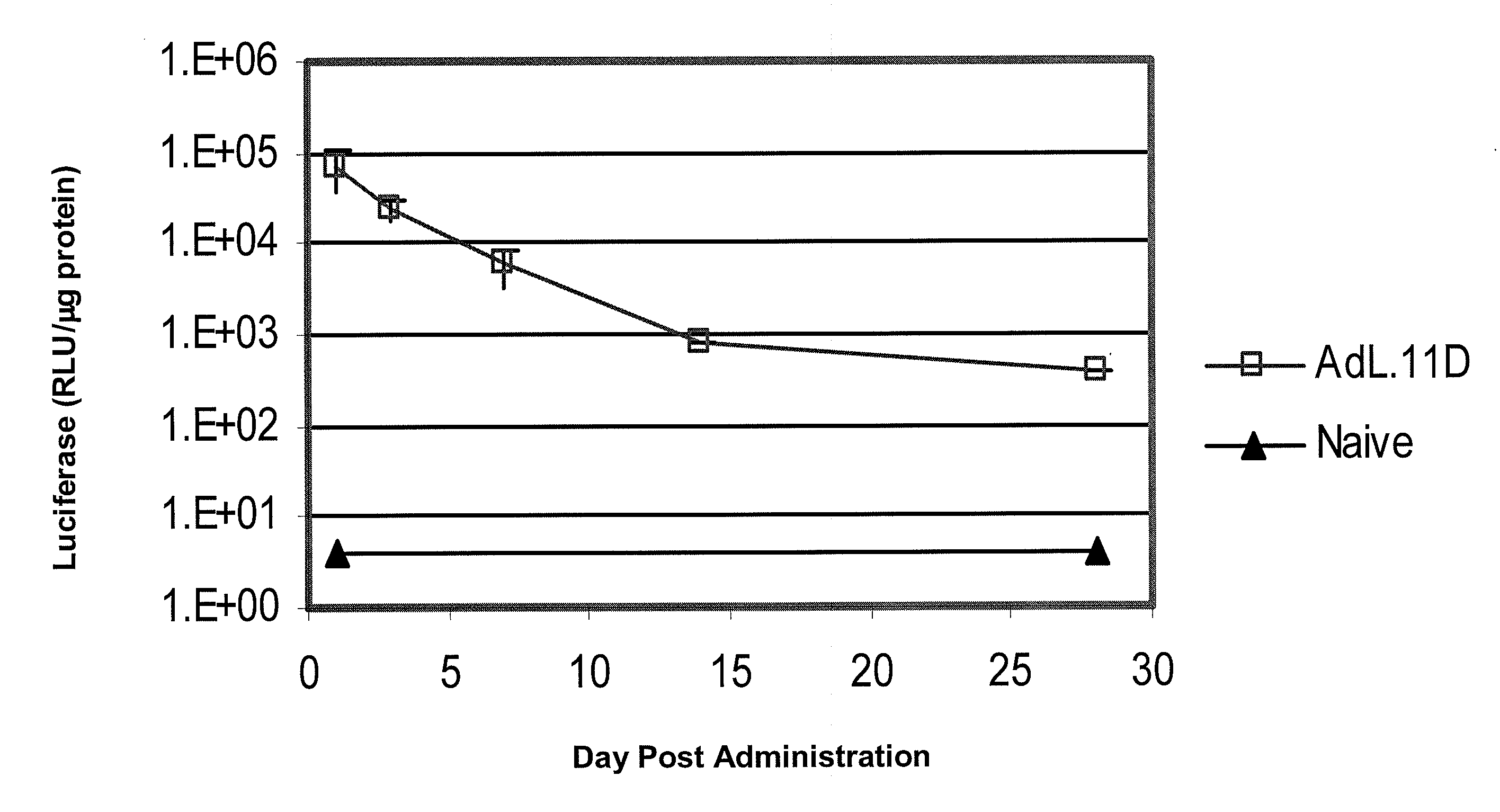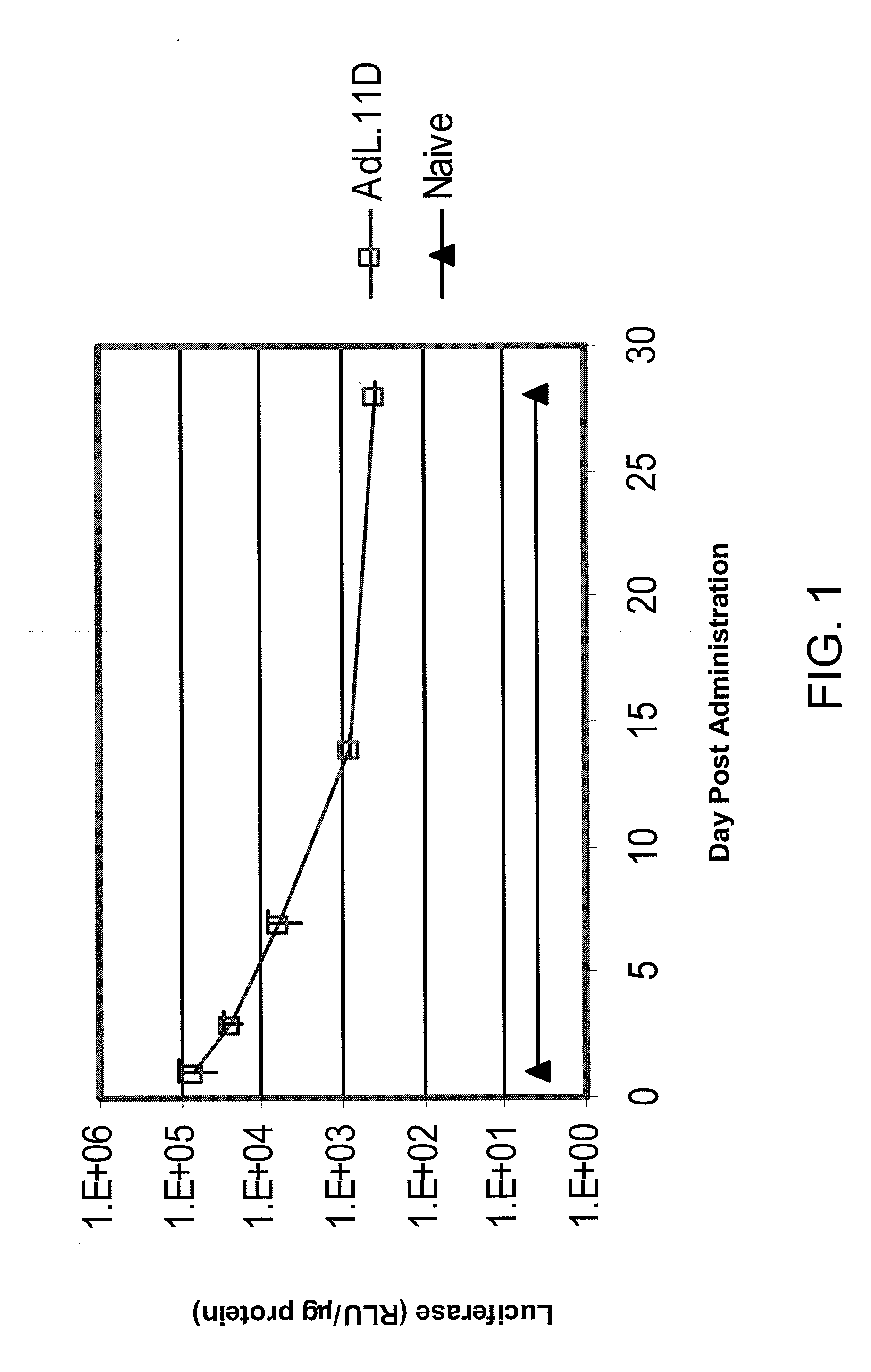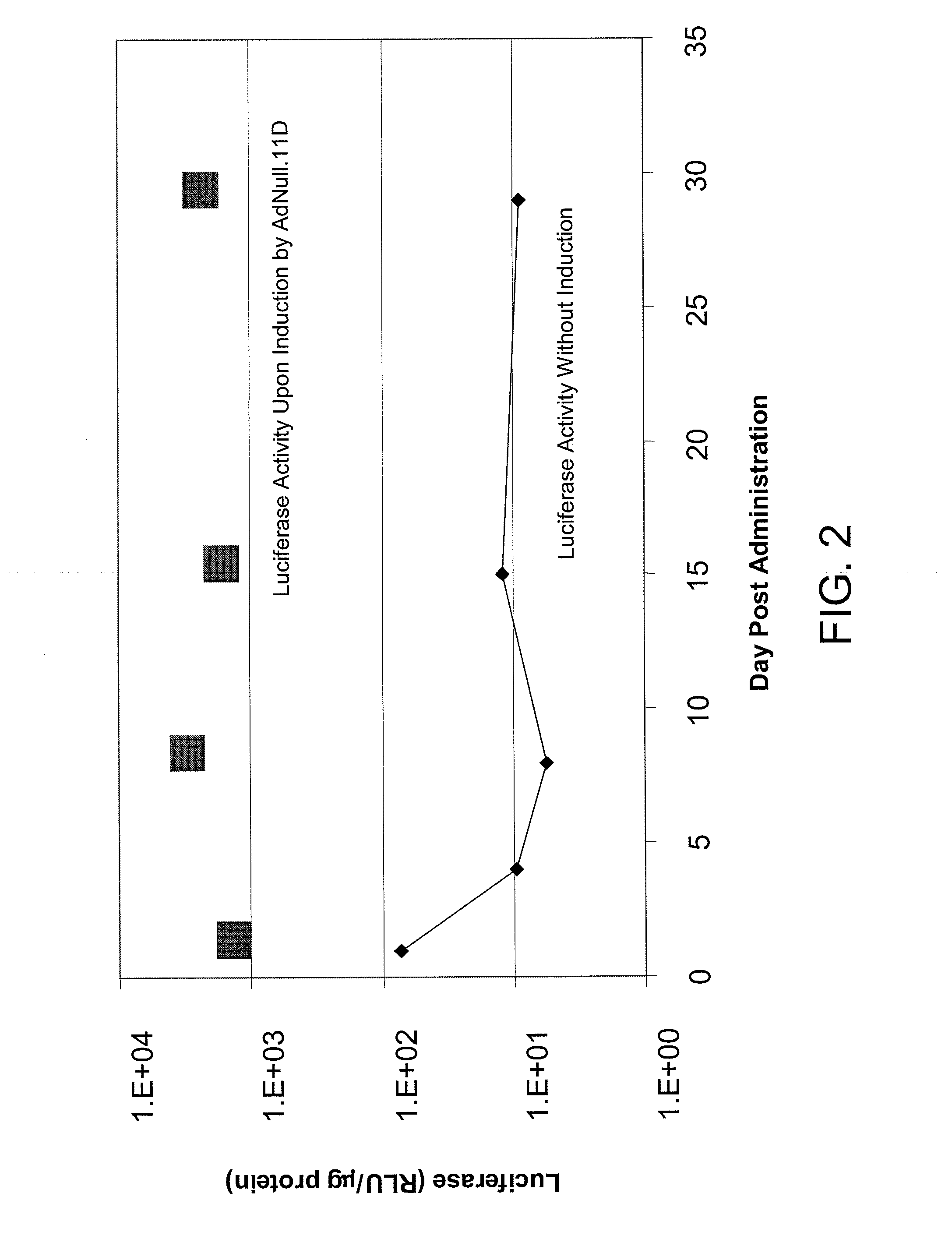Materials and methods for treating ocular-related disorders
a technology for ocular disorders and materials, applied in the field of materials and methods for treating ocular disorders, can solve the problems of severe vision loss and blindness, damage to and insufficient regulation of the vasculature of the ey
- Summary
- Abstract
- Description
- Claims
- Application Information
AI Technical Summary
Benefits of technology
Problems solved by technology
Method used
Image
Examples
example 1
[0126]This example illustrates a preferred method of obtaining expression of a factor comprising both anti-angiogenic and neurotrophic activity from an adenoviral vector in in vivo retina.
[0127]An adenoviral vector deficient in one or more essential gene functions of the E1, E3, and E4 regions of the adenoviral genome and comprising a PEDF gene (Ad.PEDF) is preferably constructed as set forth in WO 99 / 15686 (McVey et al.). However, the method of the invention is not dependent on the method of vector construction employed and previously described methods of vector construction are also suitable.
[0128]Several in vivo models of ocular neovascularization are available. Neovascularization of the retina is obtained in, for example, neonatal animals, i.e., neonatal mice, by exposing the mice to hypoxic conditions shortly after birth. Several days later, the neonatal mice are exposed to standard atmospheric conditions, resulting in ischemia-induced neovascularization of the retina.
[0129]Ad....
example 2
[0131]This example demonstrates a preferred method of obtaining expression of a factor comprising both anti-angiogenic and neurotrophic activity from an adenoviral vector in in vivo choroid. The following example further provides methods for determining the effect of PEDF on neovascularization.
[0132]An adenoviral vector deficient in one or more essential gene functions of the E1, E3, and E4 regions of the adenoviral genome and comprising a PEDF gene (Ad.PEDF) is constructed as set forth in WO 99 / 15686 (McVey et al.).
[0133]An in vivo model of choroidal neovascularization can be obtained by detaching the retina of an eye of, for example, a mouse or rabbit, and debriding the pigmented epithelia. Choriocapillary regeneration is monitored in both treated and untreated eyes. Ad.PEDF is administered prior to perturbing the retinal pigment epithelial (RPE) to determine the effect of the present inventive method in preventing choroidal neovascularization. Of course, Ad.PEDF is administered a...
example 3
[0135]This example demonstrates the utility of adenoviral vectors to deliver multiple doses of an exogenous nucleic acid to the eye.
[0136]Adenoviral vectors comprising the luciferase gene (Ad.L) or control adenoviral vectors comprising no transgene (Ad.null) were injected into the intravitreal space of C57BL6 mouse eyes (Day 0). One day following injection of the adenoviral vectors (Day 1), eyes infected with Ad.L were enucleated and frozen (1st administration). The eyes infected with Ad.null were divided into three groups. In Group I, Ad.L vectors were injected into the intravitreal space of the eye at Day 14 (fourteen days following the initial dose of Ad.null). Group I eyes were enucleated and frozen the day following the second administration of adenoviral vectors (Day 15, 2nd administration). Group II eyes were injected intravitreally with Ad.null at Day 14, and injected intravitreally with Ad.L vectors four weeks following the initial injection with Ad.null (Day 28, 3rd admini...
PUM
| Property | Measurement | Unit |
|---|---|---|
| time | aaaaa | aaaaa |
| time | aaaaa | aaaaa |
| time | aaaaa | aaaaa |
Abstract
Description
Claims
Application Information
 Login to View More
Login to View More - R&D
- Intellectual Property
- Life Sciences
- Materials
- Tech Scout
- Unparalleled Data Quality
- Higher Quality Content
- 60% Fewer Hallucinations
Browse by: Latest US Patents, China's latest patents, Technical Efficacy Thesaurus, Application Domain, Technology Topic, Popular Technical Reports.
© 2025 PatSnap. All rights reserved.Legal|Privacy policy|Modern Slavery Act Transparency Statement|Sitemap|About US| Contact US: help@patsnap.com



